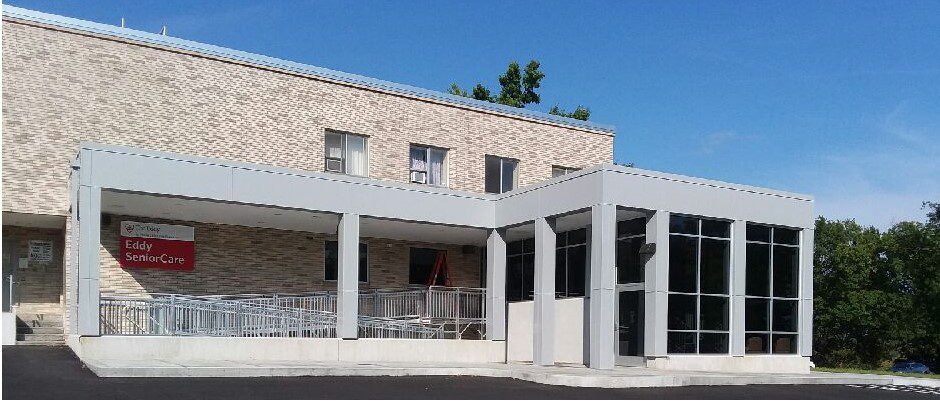
[This article was written by Aliza Stack, MPT, of St. Mary’s Rehabilitation Therapy in Clifton Park.]
Many of us sit for work, probably occasionally reflecting on the fortune of being able to “rest” our legs and body in a seated position for the majority of an 8-hour workday. Sitting without interruption for an extended time may pose a bigger problem to our hips, lower back, and neck than you may think. Here’s what can happen over time:
- Hip flexors tighten. The muscles in front of your hip that flex, or lift the leg at the hip, shorten. This can eventually limit the ability for your leg to extend past the body when walking, shortening your stride length and altering your gait pattern. The psoas muscles in the hip flexor group are attached to the low back, which can cause increased arch in standing, thereby causing more lumbar spine (low back) compression and localized back pain.
- Poor upper and mid back posture. The shoulders can roll forward and the upper/mid back increases the curve, weakening the muscles around the shoulder blades and tightening the pectoralis muscles in the chest area. This lessens our ability to straighten our back for upright posture, and in turn can impede the muscle’s ability to open up the rib cage for proper lung function.
- Poor head and neck posture. The head juts forward, placing the cervical spine (neck) in an abnormal curve. This tightens the muscles around the back of the head and neck, causing spasms and pain to the soft tissues. The increased curved cervical posture also increases the compression at the joints between the vertebrae in the back, adding irritation to the neck.
Here is what you can do to help reduce muscle inflexibility and prevent pain associated with long hours of sitting at the office*:
- Stand up at least every hour to stretch and walk about your office. Stretch the hip flexors by placing one leg behind the other and driving the hips forward while keeping a tall middle and upper body. A slight pulling should be felt just below the front of the hip, above the thighs. Hold this position for 20-30 seconds, repeating 2-3 times on each leg.
- Wake up the upper back muscles by pinching the shoulder blades together for 3 seconds, with your arms at the sides. Repeat this 10 times. A chin tuck can be performed at the same time while keeping the eyes forward to stretch the muscles that extend at the neck.
- Open up and stretch your chest muscles by standing at a doorway. Place both arms flush on either sides of the door frame with elbows and shoulders at a 90-degrees angel, if possible. Lean your body forward until a light stretch is felt at the chest and fronts of the shoulders.
Hopefully, doing this daily routine can bring your body more mobility, less pain and keep you healthy. However, if you do need our services we have several St. Peter’s Health Partners outpatient physical therapy departments throughout the Capital Region!
(*If you have any questions or concerns, or if you have a health condition that may conflict with your ability to do these stretches, please consult with your health care provider before attempting.)





